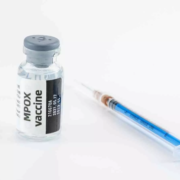Insulin resistance linked with increased cardiovascular risk not kidney risk in diabetes patients: Study

A recent study published in the Journal of Diabetes Care investigated the association between insulin resistance, cardiorenal risk and the effectiveness of finerenone to the management of type 2 diabetes.
This FIDELITY study involved a total of 13,026 patients with type 2 diabetes and examined whether insulin resistance, measured by estimated glucose disposal rate (eGDR), influence the risk of cardiovascular and kidney complications. Furthermore, if the risk affected the effectiveness of finerenone when compared to a placebo was examined.
The results showed that patients with lower eGDR had a significantly higher incidence of cardiovascular events compared to those with higher eGDR, irrespective of treatment that indicates insulin resistance. The incidence rate of cardiovascular events per 100 patient-years for finerenone was 5.18 and for placebo was 6.34 in the lower eGDR group, versus 3.47 for finerenone and 3.76 for placebo in the higher eGDR group.
There was no significant association found between eGDR and kidney outcomes. Also, the study revealed that the efficacy of finerenone in reducing cardiovascular and kidney complications was consistent across patients with different levels of insulin resistance.
The findings underscore the importance of considering insulin resistance as a significant risk factor for cardiovascular events in patients with type 2 diabetes. While insulin resistance was not associated with kidney outcomes in this study, it remains as a crucial factor in assessing overall cardiorenal risk.
The outcomes provide valuable insights into the complex interplay between insulin resistance, cardiovascular risk and medication efficacy in individuals with type 2 diabetes. Understanding these relationships can improve more targeted treatment strategies for patients with this chronic condition.
Source:
Ebert, T., Anker, S. D., Ruilope, L. M., Fioretto, P., Fonseca, V., Umpierrez, G. E., Birkenfeld, A. L., Lawatscheck, R., Scott, C., Rohwedder, K., & Rossing, P. (2023). Outcomes With Finerenone in Patients With Chronic Kidney Disease and Type 2 Diabetes by Baseline Insulin Resistance. In Diabetes Care. American Diabetes Association. https://doi.org/10.2337/dc23-1420
Powered by WPeMatico



















